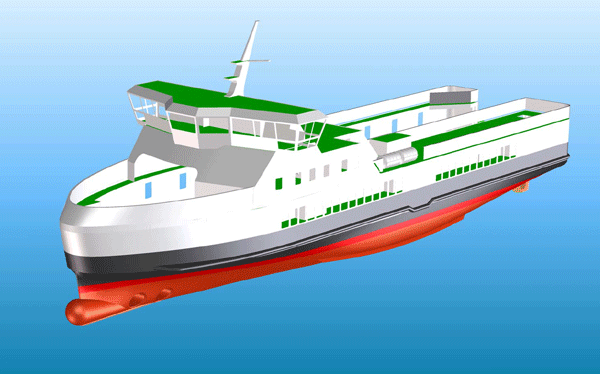EU to fund Danish zero-emission ferry

The ferry will be powered by a battery pack
The ferry will be powered by what is said to be the largest battery pack installed on a ferry so far. The zero-emission ferry will be powered by wind-sourced electricity, and the large battery will give a high charging capacity, allowing for short port stays. The ferry is expected to be operational by 2017 and will link Aero Island to mainland in Denmark carrying 130 passengers and 40 vehicles and saving 2,000 tons of CO2 per year. The ferry will carry two independent battery packs delivering a total of 3,800 kWh. Combustion engines and associated tanks and piping will not be required, but the battery packs will add around 51 tonnes to the vessel’s weight. Two electric motors of 750 kW will give the ferry a speed of up to 15.5 knots. Tuco Marine will be providing lightweight composite structures for the superstructure of the ferry which will ensure the lowest possible weight of the vessel. The cost of the vessel is expected to be about 33 percent more than a conventional ferry, and a further 15 percent is required for the necessary land installations. Reduced operational costs are expected to compensate for this. The total savings are anticipated to be 15-20 percent compared to the islands existing ferry operations.
